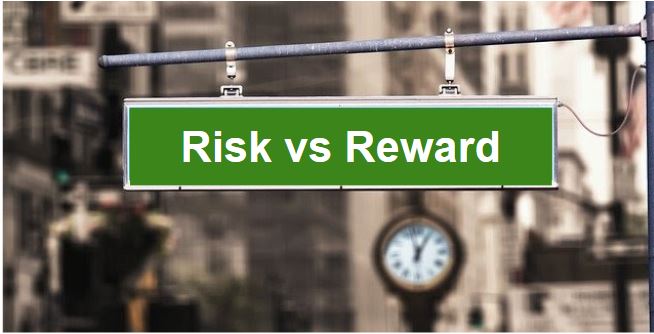Who Handles Your Investments?

Some years ago, I was sitting on an overseas flight and I looked up to see an older, gray-haired gentleman in a white uniform shirt with lots of gold buttons and black stripes. I soon realized: ”Hey, that’s the Captain! Wait! Who’s flying the plane?”
The captain was heading back to get some sleep. Get some sleep? What?Well it was a 17 hour flight to Asia, so the guy had to sleep.
I often think about how most people invest. And most people just hand their money to their broker and HOPE that he is doing a good job. It begs the question, “Who handles Your Investments”

Fact or Fiction
In fact, recently I sat down with some good friends – most of them are senior executives at Fortune 500 companies – and I asked them about their investments.
“Investment in knowledge pays the best interest,” said Ben Franklin, so I was flabbergasted at what I discovered.
Most of them had NO IDEA how their investments were doing. Even when I asked them to take a guess the answers were pretty similar to this: “Pretty good I guess. Probably about 8 to 10% this year.”
Probably?!?!
And only 8% to 10% a year? ARE YOU KIDDING ME?
So I would follow up with this question: “Are you happy with your planner? Do you trust your broker?”
The answers came back unanimous: YES!
I was floored. (Seriously, you smart guys think 8% is good?)
I know that I am in the wealth management business, but I couldn’t believe that these smart, successful guys didn’t really know how their investments were doing. Worse, yet, they thought that 8% to 10% was pretty good.
When I told them that I got a 40% return in my hedge fund over many years, and how my IRA was up over 100% in 6 months, they almost didn’t believe me. They didn’t even believe that it was possible – without taking a huge amount of risk. They were wrong.
The difference between making 8% a year and even 40% a year, over a 15 year period is 1,800%. That’s 18 times higher. It is the difference between $1.4-million in retirement, and $18-million in retirement. It’s probably something that they should know about.
The problem is that most people don’t even know what they don’t know. Most people don’t know who handles their investments…crazy right?!
They don’t know that there are ways to lower risk while getting good returns.

You Don’t Know What You Don’t Know
What they don’t know that Casinos do the same thing: the GAMBLER comes in and takes a huge amount of risk. The HOUSE makes it possible….and takes their money over time. It’s the same thing I do in the stock market. I am the house and not the gambler. Warren Buffett does this and so does every major firm on Wall Street. Good investors reduce risk.
Also, they don’t look at the instruments in their cockpit, but they just hope that they are going to make it to retirement and have “enough” money.
They don’t realize that they could fundamentally change their life, not just during retirement, but before. They could retire early and travel the world. They could pursue their dreams, spend more time with their family, and just enjoy their life more rather than just working all the time.
All with a simple education about what their money could be making.

Risk vs Reward
Just know that you need to take prudent risks in order to reap rewards. Sure, you can bury your money in your backyard, but you will lose buying power to inflation (bread will cost more next year than it does today). You will get a return OF your money if you put it in the bank earning 1%. But you must pay tax on the 1% and you will lose 2% to inflation. So again, the no-risk strategy of being safe is actually a negative reward. On the other hand, you could put your money into penny stocks and buy 100,000 shares for 2 cents or $2,000 which could pay off wildly if the company succeeds turning your investment into $1-million. But the chances are you may lose it all. In every strategy there is a reward to risk component, and you should become proficient at determining it before you get involved in an investment. The wealthy always know their downside and have calculated for it. You should too. The general rule is (within reason) the higher the potential risk, the higher the potential reward.
I have a distant mentor named William O’Neil, said to be the second-greatest investor of all time. O’Neil says: “If you are not making 40% a year in the stock market, you are doing something wrong.” Guess what? He’s right!
I am living proof of that. My accounts aren’t killing it. I am not getting 500% a year like some of the Facebook Ads I see. But they are taking HUGE risks.

Truth Bomb
No, I easily get way more than the 8% to 20% a year that my system is designed to get (at a minimum).
But that is just it. There are few people who even take the time to learn that there is a system that will make them many times what they are getting now. And guess what? We take way less risk than most people take in their accounts already, PLUS they are only getting 8% to 10% – and that’s if they even know how they are really doing.
So, while I trust that the Captain has it all under control, I know that he does because he set up the cockpit to get us to the destination safely, and he has someone else watching even when he is not there. The system handles the work. It is mostly on auto-pilot, but you better believe that the flight crew know exactly what is happening at all times.
You should do the same in your investments.
If you don’t know, go find out. Gather up your brokerage statements and figure out how well you are doing. Start watching your cockpit system. If you are off course, it may be time to make a change.
Maybe I can help you. If you are not getting at least 8% to 20% or more, you should take a look at my system.
P.S. To get a copy of my latest book, Hacking Money, click here.
P.P.S To get your free copy of my report on passive income, click here.
